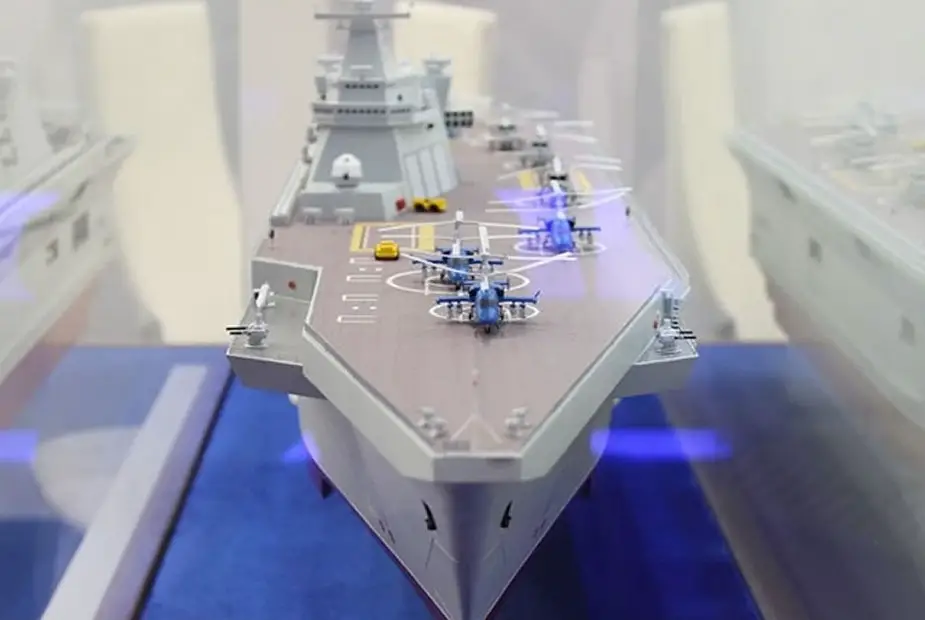Russia to begin construction of universal landing ships in 2020 - take 3
Russian media have recently reported the characteristics of prospective amphibious assault ships which are to be laid in the spring of 2020. They show that the Russian Navy will obtain, although with a delay, universal landing ships for ship-to-shore connection. Profile magazine writes about their characteristics and design.
 Priboy LHD scale model showcased by Krylov during Army 2016 exhibition (Picture source: Navy Recognition)
Priboy LHD scale model showcased by Krylov during Army 2016 exhibition (Picture source: Navy Recognition)
The key issues of the new engagement concept for universal amphibious assault ships which shaped out in the West in the 1980s include ship-to-shore landing. 1. A dockage chamber for landing boats and sufficient airpower allow landing an assault with heavy hardware without approaching the coast (from over horizon). It decreases the threat for the warship from coastal fire, as well as potential losses. 2. The assault should be autonomous. The landing ship with a marine or infantry battalion and airpower can operate in a formation of warships and engage in operations which do not demand air support from the ground forces. Ideally, an assault should be backed by an aircraft carrier, however, even a helicopter wing provides major opportunities in contrast to ordinary landing ships which land assault ashore and have no helicopters (or maximum 1-2 craft). 3. Expanded operation space. Landing from helicopters, boats and air-cushioned ships expands the coastline for assault and makes the operation possible at any distance from the base provided autonomous assault.
Western navies operated according to the concept and engaged in military-political missions in very distant areas. The Soviet leadership had to look for other options in similar situations and agree with not very friendly countries on the use of their territorial waters and airspace, camouflage military activities as civilian and engage forces in expeditionary operations which were not designated for them.
Today the needs of amphibious assault forces of the Navy are determined by the following considerations: it remains necessary to support amphibious assault, but in the absence of a big war possibility against NATO the expected scope of the assault and support radically decreases.
The possibility of conflicts in areas outside the effective range of frontline aviation and coastal bases does not disappear, as Moscow has economic interests in Africa, the Middle East and Southeast Asia. The set of non-military means which Russia can use to protect its interests away from its borders is less than the Soviet Union had. It automatically increases the significance of military might. The very possibility of its engagement may be sufficient to convince the opponent that the course it chose is wrong.
Navy operations to demonstrate the flag also serve the purpose. Operations with an assault formation can be even more effective.
The own weapons of the warship are secondary in such conditions. Operating within a formation, an amphibious assault ship has to be armed with short-range air defence to down the craft that breaks through the air defence of the formation and antisubmarine short-range weapons.
The high speed of 23-25 knots and the airpower of two dozen helicopters allow engaging the warship as the backbone of a naval formation which has to fight submarines.
A landing ship does not need to have assault support weapons. It does not have to enter the range of effective coastal artillery fire and fire support should be provided by the helicopters of its airpower, the Profile magazine said.


























